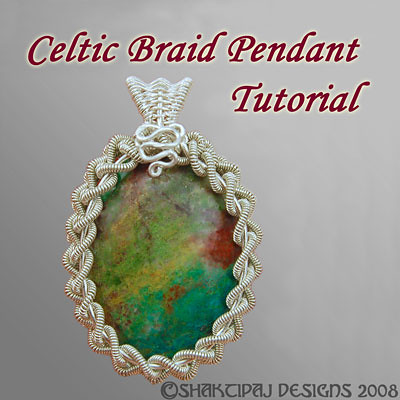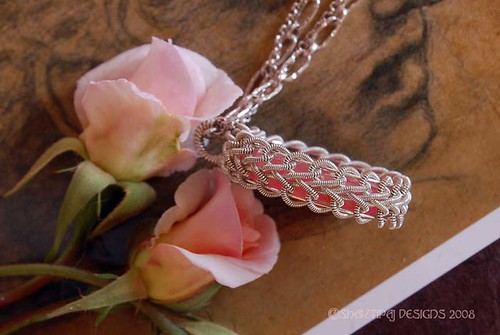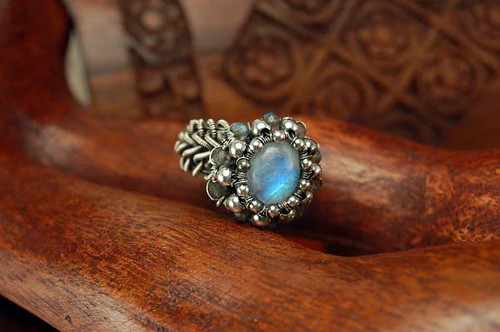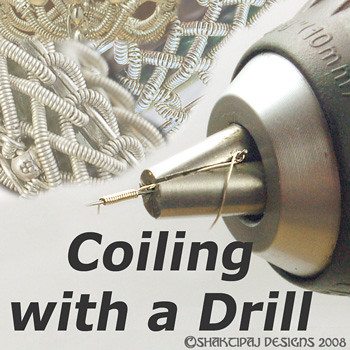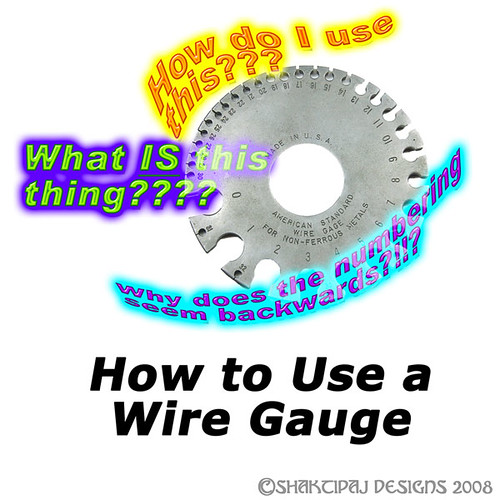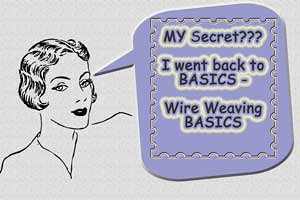Neat and intentional finishes are absolutely imperative! It is a bonus if it only takes seconds. So in the interest of creating those neat finishes in wirework, I'm going to offer my number one tip for creating a neat finish. This is an excerpt taken from my Winter Wreath Earring and Variations Tutorial. I actually love this tutorial, and teach it often - it features a simple earring style with lots of punch. But the real value is in the basic tips and technique, which make it infinitely versatile!
Here we go:
These next few steps are the method I use to get my wrap ends neat, and practically invisible. It virtually eliminates the issue of ends showing OR snagging - meaning that finding a 'no-show' place to tuck them in is a thing of the past!!!!!!!

Using chain nose pliers, flatten the end of the wire as shown. Use just enough force to flatten without too much spreading.

Create a long point on the tail by cutting a small diagonal with your flush cutters - on ONLY one side. Try to make the cut from one end of the flattened area to the other.
TIP: For this process, a short, almost horizontal cut is not useful. That's what leaves those gaps between wraps and beads!

IMPORTANT: If the pointed side is away from to the existing wraps, then the end result is almost like a flush cut, once everything is pressed down. If the point is reversed, or next to the wraps, as shown here - then it creates a more flush, but slightly conical ending that will 'disappear' into bead holes.
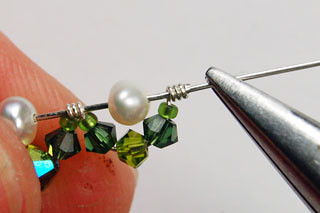
Lightly secure or 'tuck' the tail down onto the core wire with the chain nose pliers. Make sure the point is pressed down. Using a light pressure, rotate the pliers a few times around the wrap. I call this the 'Twist 'n Crimp' move. It doesn't take much force - just lightly skim the metal with the pliers as you rotate them. Repeat as necessary. The wrap should still be able to rotate on the core. This process is called 'burnishing'.
Because the tail was flattened, it will lie very close to the core. Because it was cut diagonally, there will not be a noticeable gap between the wrap and the subsequent work.
There you have it!
 Sometimes it can be difficult to tuck in that final end. Use the help of an extra set of pliers. I like bent chain nose pliers for this, because they hold the work securely, but offer more room to maneuver.
Sometimes it can be difficult to tuck in that final end. Use the help of an extra set of pliers. I like bent chain nose pliers for this, because they hold the work securely, but offer more room to maneuver.TIP:Try to stay away from your round nose pliers for this job, or any job that requires holding the wire firmly. Using them is the reason that most loops have divots and tool marks.
Hope this has been helpful, or at least enlightening. I know it seems like me being nit-picky to some folks - I hope it isn't the same ones who ask me how I get my work so neat and precise.
Be careful what you wish for, it might be far more detailed than than you thought!
Be gentle with yourselves,
Perri
